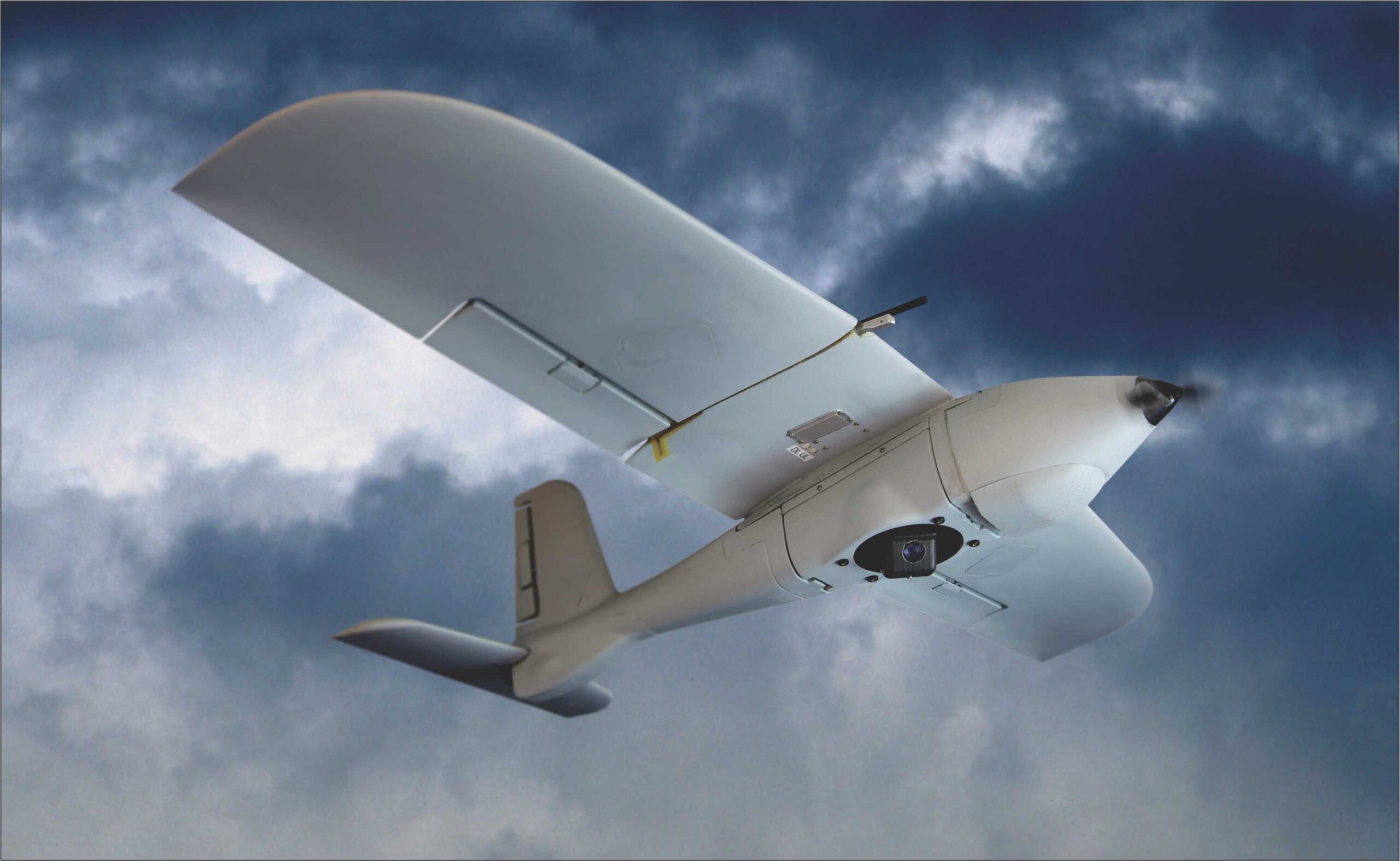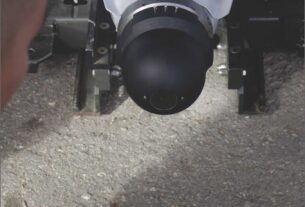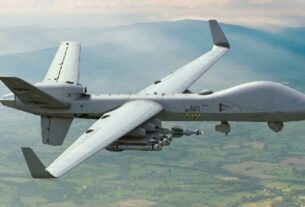Anti submarine warfare operations and modern naval strategy
The anti submarine warfare operations are gaining a strong foothold as nations are facing acute threat from advancement of new technologies and more stealthy submarines which can defeat enemy defences easily.
Recently, India and United States enhanced their naval cooperation as these types of basic engagements will be the building blocks for an enduring navy-to-navy relationship which will ultimately see a strong ASW capability for both nations.
The entrant in this game is China. Since US attack submarines are seeking to track the Chinese nuclear armed submarines in the Pacific, perhaps the Chinese are now planning to send their own attack submarines to the Indian Ocean in greater numbers to scrutinize the Indian patrols.
Indeed, the anti submarine warfare operations are hard due to proliferation of submarine operators and advent of quieter submarines which can use air independent propulsion (AIP) and reduced indiscretion rates.
The evolution of submarine weapons such terminal effectiveness and stand-off range with the relative ineffectiveness of many ASW weapons and the unchanged and difficult physics of seawater can turn the ASW mission more difficult.
The rapid expansion of computing power has already ushered in new sensors and methods that will make stealth and its advantages increasingly difficult to maintain above and below the water.
Therefore, future submarines should have to operate away from chokepoints and contested spaces but be able to project influence into them.
They should have a low indiscretion rate and be a hub for a suite of long-range sensor and weapon systems to get networked with other units, including electronic warfare platforms to be able to manoeuvre quickly in response to a rapidly changing threat environment.
History
The submarine was the first stealth combat platform, and remains the most enduring, even though its full military potential was poorly appreciated in the early days of its development.
In 1914, despite the sinking of three British cruisers in almost the same number of minutes, naval thinking held that this new underwater threat would be short-lived, as countermeasures improved.
With the development of sonar four years later, that prophecy appeared to be coming true, leading the US Naval Institute to conclude in its assessment in August 1925 that the submarine would ultimately prove too vulnerable to be used in conflict.
History, of course, tells a different story, and the cat-and-mouse game between subsea and surface combatants that began with the U-boats and continued through the Cold War era, remains to the present day.
It is an uneasy arms race which has periodically seen one or the other gain temporary advantage, but which neither side has, at least as yet, seemed able to win decisively – and the innovations in both stealth and detection technologies keep on coming.
Many of these developments have been driven by a shift in the expected battle-space. With the end of the Soviet threat, the concept of open-sea conflict between large fleets has largely faded from the West’s strategic planning, to be replaced by the expectation that future naval operations will be in littoral waters, and principally against asymmetric threats.
This new scenario is an undeniably challenging one for anti- submarine warfare (ASW), since shallow coastal seas provide natural underwater concealment.
Moreover, as the US Naval Doctrine Command’s ‘Littoral Anti-Submarine Warfare Concept’ document explains, detection is further hampered by the global trend towards smaller, but more lethal fleets; in effect, fewer needles are scattered through a much less easily sifted haystack.
There is, as Captain John Morgan of the US Navy put it, a very real need for enhanced capabilities to root modern diesel, air-independent, and nuclear submarines out of the ‘mud’ of noisy, contact-dense environments typical of the littoral, and be ready as well to detect, localise, and engage submarines in deep water and Arctic environments.
Achieving better detection principally rests on improving sonar and other sensor systems to provide greater accuracy and wider coverage areas, issues which, for example, the AN/SQR-20 multifunction towed array (MFTA) – the first new surface ship sonar array built for the US Navy in a quarter of a century – has already begun to address.
An active and passive sonar system, it is intended for use in a variety of roles and aboard a number of different classes of vessels, specifically including those ear-marked for future littoral combat roles.
The system was also developed for use with a remote multi-mission vehicle (RMMV) snorkelling unmanned surface vehicle (USV) and although it was ultimately decided not to take this further in terms of ASW, it does give a strong hint that this may be an avenue for the future.
Such deployment of unmanned platforms has obvious benefits in extending the mobility and range of anti-submarine detection, with multiple sets of small arrays enabling a warship to effectively control a significantly larger area, either offensively or defensively, as required.
Changing warfare
As USV and unmanned underwater vehicle (UUV) technologies mature, adding submarine hunting to their established counter-mine role forms the logical next step in dealing with an elusive foe who currently holds the advantage.
Looking still further ahead, research at Southampton University has begun to challenge the relative security submarines currently enjoy in littoral waters, with the development of a system known as TWIPS-twin inverted pulse sonar-and based on the natural sonar of dolphins.
Scientists there have shown that a dual stream of underwater pulses can penetrate bubbles more effectively than conventional sonar and provide a significantly better detection rate-at least under laboratory conditions.
Although the work is still in its infancy, it could herald the end of easy invisibility for submarines amid turbulent coastal seas.
However, as fast as such new detection solutions are developed to give the fleeting edge to ASW, inevitably, opposing innovations evolve to help submariners elude them.
Acoustic signatures have, for instance, already been cut to unprecedented low levels with the likes of the US Virginia class attack submarines, which employ a novel propulsor design, isolated deck structures and an innovative anechoic hull coating – but even so, they can still be heard.
Future generations of submarines, are gearing up to be quieter still, particularly if the direction taken by Howaldtswerke-Deutsche Werft (part of ThyssenKrupp Marine Systems) with its revolutionary Class 212A, becomes mainstream.
Powered by hydrogen fuel cells, these vessels offer non-nuclear, air-independent operation, are almost completely silent and radiate virtually no heat. This, coupled with high-tech energy management, acoustically optimised equipment and non-magnetic construction, is claimed to make these submarines nearly impossible to detect.
The Holy Grail of submarine stealth, however, remains a ‘cloaking device’ that would render submerged vessels invisible to sonar and, although the research is still in its early stages, it seems that nanotechnology may hold the key to turning this science-fiction staple into reality.
Naval researchers have long been interested in the ability of micro-particle nano-coatings to help minimise bio-fouling and its associated drag and turbulence, but recent work has begun to demonstrate a major potential acoustic benefit too.
The idea, in the words of Nicholas Fang, professor of mechanical science and engineering at the University of Illinois, is not about dampening noise, but to guide sound waves around structures.
If one has a coating on a submarine that bends acoustic waves before they hit the surface, guiding them around the submarine smoothly, then one would not be able to detect a submarine using sonar.
His team has already successfully managed to demonstrate a functional acoustic cloak capable of hiding a submerged steel cylinder from a sonar sensor array in the laboratory.
While doing the same for something the size of a Seawolf nuclear submarine may still be some years off, the implications are clear – and there may be more benefits to come.
Researchers at the University of Texas are harnessing energised carbon nano-tubes to generate ultra-low frequency sound, offering the long term promise of a thin coating for subs that could provide noise-cancelling against incoming enemy pings, while additionally helping enhance the submarine’s own sonar system.
The changing nature of the game means that getting the upper hand is hard – and holding on to it, even harder.
For the moment at least, as the sinking of the ROKS Cheonan most recently demonstrated, the advantage lies underwater, but with the wake-up call sounded and the world’s navies readdressing their ASW doctrines, that may be a short-lived thing.
Developments in unmanned platforms and littoral sonar may shortly make detection easier, but all of that could, in turn, amount to nothing if acoustic cloaking becomes a viable reality – and so it goes on.
It is a ceaseless round of measure and counter-measure, but in the end, even if it is a contest that no side can conclusively win, it is one which neither can afford to lose.
New players
Having established itself as a leader in the nuclear submarine front, Russia is now making considerable progression in the development of its Borei-Class fleet, and the UK is already concerned with the long-term sustainment of its Trident programme, issuing contracts for the design of submarines that aren’t expected to enter service until 2030-2040.
Details of China’s nuclear submarine fleet, fuelled by rumour and inconsistent satellite imagery, remain sketchy, with a number of submarines alleged to be under construction and in development.
India has become the latest nation to equip itself with nuclear submarine capability with the development of the INS Arihant.
Russians still have the march. Having operated within the Gulf of Mexico undetected, the stealth capabilities of the Akula-class submarine have been vaunted in recent weeks.
It is already acknowledged as the quietest nuclear attack submarine in service with the Russian navy, with sources claiming the Akula-II class submarines to possess a noise profile comparable to that of the US Los Angeles-class submarines.
The Virginia-class submarines can, however, go one further. Utilising newly-designed anechoic coatings, isolated structures and a new propulsor design, the Virginia-class submarines boast an acoustic signature lower than the Russian Akula-II class submarines, equivalent to that of the Seawolf-class submarines that they were designed to replace.
While the submarine forces of the PLAN have expanded and improved their technological capabilities, the ASW capabilities of the United States have eroded.
Throughout the Cold War the United States faced a persistent threat from Soviet submarines and ASW was to be a primary mission of the US Navy during a conflict as it attempted to eliminate Soviet sea based nuclear forces and ensure that sea lanes to NATO allies in Europe remained open.
The fall of the Soviet Union eliminated the undersea peer threat to the United States and ASW has not been a major component of US naval operations in recent conflicts.
The US has retained qualitative and technical superiority in the undersea domain but ASW capabilities have suffered in recent decades.
Much of the difficulty faced by US ASW forces stems from the technical challenge posed by the stealth of advanced conventional submarines.
Conventional submarines operating on battery power have a smaller passive sonar signature than nuclear submarines which must keep their reactor machinery operating.
AIP systems serve to extend the period in which SSKs can operate quietly making them more capable and more difficult to detect.
In addition to the technical challenge posed by modern conventional submarines forces, the balance of undersea forces in the Pacific is shifting.
While the PLAN expands its submarine forces, US naval forces are drawing down. The current shipbuilding plan of the US Navy envisions a reduction in submarine forces to a fleet of only 39 nuclear attack submarines in 2030, significantly less than the 48 that the Navy projected as necessary to fulfill future missions.
While US submarines are unmatched technologically, their low numbers will be a significant shortcoming due to the heavy demands that would likely be placed on them to perform both strike and ASW missions during a potential conflict between the US and China.
Other shortfalls in US ASW capabilities can also be expected. Anti-submarine warfare is a planned mission for the Littoral Combat Ship (LCS), a program which has proven to be deeply troubled.
Currently deployed LCSs have developed significant problems with structural damage due to corrosion. The LCS also lacks organic ASW capabilities and is not equipped with the towed sonar array found on previous dedicated ASW combatants.
Rather, the LCS can be equipped with an ASW mission module when necessary that is projected to include unmanned undersea vehicles (UUVs) and unmanned aerial vehicles (UAVs) that can carry out ASW missions.
The LCS mission modules are facing a number of development hurdles and are significantly behind schedule. The US aerial ASW capabilities have similarly eroded.
The US retired the S-3 Viking leaving US carriers without a fixed wing ASW capable aircraft. While the US is replacing its P-3 Orion maritime surveillance and ASW aircraft with the advanced P-8, such aircraft must operate from land bases.
While the P-8 will likely be a highly capable ASW combatant, the bases it operates from would be highly vulnerable to the types of missile and air attacks that would be integral to a Chinese A2/AD strategy.
While the US Navy faces significant challenges in the ASW arena, it has taken a number of steps to cope with the increased threat posed by Chinese and other submarines. The US naval forces in the Pacific have placed a renewed emphasis on ASW training.
As part of an effort to build greater familiarity with conventional submarines equipped with AIP systems the US conducted two years of training with the Gotland, an advanced Swedish diesel submarine.
Such training continues as part of the Diesel Electric Submarine Initiative which involves regular training exercises involving US ASW forces and the conventional submarines of allies.
While this training is a step in the right direction, exercises have demonstrated that advanced diesel submarines are highly capable threats that can threaten major US surface combatants.
Shipbuilding shortfalls are unlikely to be improved due to expected future cuts in the US defense budget and the significant problems that plague current US navy procurement efforts.
The US has coped, in part, by shifting its current forces to better face the threat posed by expanding Chinese capabilities.
The US has permanently home ported four Los Angeles class submarines and a tender in Guam and shifted other submarines to bases in Hawaii and California.
The US is also planning to base future LCSs in forward bases in Singapore. While forward deployment does risk putting the infrastructure supporting US ASW forces within range of Chinese missile systems, it would also reduce the transit time for US forces, allowing them to deploy more quickly and remain in theater longer during a conflict.
The shortcomings in China’s own ASW capabilities would allow US submarine forces to disrupt Chinese attempts to project power in the region and threaten PLAN surface forces.
Cruise missile armed US submarines would also play an important role in strikes against targets within China. During Desert Storm just 10 per cent of missile strikes came from submarines, while one third of such strikes were launched from submarines during the conflicts in Afghanistan and Iraq.
The conversion of Ohio class ballistic missile submarines to guided missile submarines (SSGNs) has expanded this capability further.
The US submarines represent a power projection force that is relatively immune to Chinese A2/AD capabilities as they cannot be threatened by air and missile forces and China currently lacks ASW forces to credibly threaten them.
While the striking abilities of US undersea forces will be diminished by the retirement of Ohio class SSGNs, they represent a threat that the PLAN lacks the ability to credibly respond to.
PLAN submarines play an important role in Chinese A2/AD strategies. While they are not as novel of a threat as anti-ship ballistic missiles, their numbers and increasing sophistication pose a severe threat to shrinking US submarine and surface forces.
China’s submarine force is likely to expand in the future and develop increasing long-range and blue ocean capabilities that can attempt to push US forces further from Chinese home waters.
The United States must invest to maintain the superiority of its undersea forces and to relearn and redevelop the core ASW capabilities it lost following the end of the Cold War and the Soviet submarine menace.
Beyond ASW, submarines also represent a capability that is relatively immune to Chinese A2/AD strategies.
The ability of US submarines to operate in environments too dangerous for surface ships should be a serious consideration in future procurement and investment decisions.
New strategy
Chinese procurement trends suggest a preference for smaller and stealthier submarines rather than long-range endurance platforms.
While China is moving towards a blue water navy, it is capitalizing on advantages conventional submarines present to green water navies.
Conventional submarines, particularly those equipped with AIP systems, can operate with a greater degree of stealth and freedom in the waters near China than larger US nuclear submarines.
Advanced weapons systems deployed on submarines along with land based missile and air forces would serve to deny the waters near the Chinese coast to US and other combat forces.
While US submarines play an important role in ASW activities, Chinese operational planners seem to focus more on the development of anti-surface warfare (ASuW) doctrine enabled by stealthy conventional submarines.
Through the purchase and indigenous production of quiet diesel-electric boats, China intents to create a ‘ghost’ submarine force that would move silently along the Chinese coast looking for possible surface targets while avoiding encounters with the enemy’s submarine force.
The difficult underwater geography of the littoral region as well as the noise from coastal shipping, fishing, and other economic activities make it an ideal operating environment for China’s submarines.
Chinese investments in hydrographic studies enhance its knowledge of the underwater topography, thermoclines, and other elements of the coastal area and would allow the PLAN to take full advantage of the opportunities offered by the Chinese coastal operation theater.
While Chinese operational plans and possible missions for their submarine force remains opaque to outside analysts, the limitations of their current systems suggest that submarine forces are unlikely to operate independently.
Rather, as Admiral McVadon suggests in the Naval War College Review, Chinese submarine forces would work in coordination with shore based missile systems.
Given that older Chinese submarines would encounter difficulty attempting to penetrate US ASW defenses to conduct anti-surface strikes under normal conditions, the PLAN would be more likely to wait until missile strikes launched from the mainland had degraded US missile defenses before launching anti-ship missile and torpedo attacks.
The supersonic Sizzler ASCM fired by Kilo class submarines could threaten U.S. surface forces if launched in sufficiently numbers, or if a Kilo managed to surprise its target.
The subsonic missiles and torpedoes carried by the rest of the Chinese submarine fleet would be easier for US forces to defeat but they could still pose a significant threat to US surface vessels after US defenses were degraded by other attacks.
Older submarines including the Ming, Romeo, and Han class vessels based on obsolete Soviet designs, can also pose a threat.
Such submarines could act as mine layers or as bait, bringing in US submarines and ASW forces into the range of missiles carried by more advanced Chinese submarines.
The technological developments undertaken by the Chinese submarine force have had an impact on the PLAN’s assessment of their own capabilities and roles.
The Kitty Hawk incident, in which a Chinese submarine surfaced in the midst of a US carrier battle group, suggests that Chinese submariners are confident in their ability to avoid detection by US ASW escorts.
Such incidents as well as an increasing number of submarine patrols suggest that China aims at operating its forces further afield in the region and sending the message across that China is a non- negligible maritime power in the Asia Pacific.
Indeed, by 2030 there will be 288 submarines in East and South East Asia, up from 200 in 2010. This is a critical development.
Submarines are highly capable platforms that can provide asymmetric deterrence against a superior foe. They can also collect intelligence and reconnaissance, escort amphibious forces and insert Special Forces.
Many of the new submarines entering the region are quiet, European-designed, diesel-electric models.
For instance, in 2011 Indonesia signed a deal with South Korea for three Chang Bogo-class diesel-electric submarines, which are based on the German-designed Type 209.
The first is slated to be delivered in December. Jakarta is also considering buying two Kilo-class submarines from Russia by 2019. Malaysia acquired two Scorpène-class subs from France in 2009 and 2010, with the boats becoming fully operational after development delays in 2012.
Singapore ordered two Type 218SB advanced air-independent propulsion boats from Germany in 2013 which will supplement its four existing submarines.
Further afield, Vietnam’s six brand new Kilo-class submarines have all been delivered and are already reportedly being used as significant asymmetric deterrents against a numerically superior force in the South China Sea.
South Korea is nearing the end of a successful rolling build program that has been underway since the early 1990s.
It currently fields nine Chang Bogo-class boats and is half-way through building three batches of Son Wonil-class subs, based on the Type 214, another German design.
North Korea is estimated to possess 70 submarines of various types. The country’s slow but steady progress in this area became clear last year with its failed testing of a ballistic missile from a submerged platform. India, Pakistan, Taiwan, Thailand and Bangladesh also are all pursuing modern submarine programs.
By 2020 China’s submarine force is likely to grow to more than 70 submarines. The focus on China’s rapidly growing underwater warfare capability is central to understanding the maritime build-up in the region.
No doubt, China’s future submarine force, already fairly dynamic, will be a mix of advanced conventional-powered boats and improved nuclear-powered vessels.




